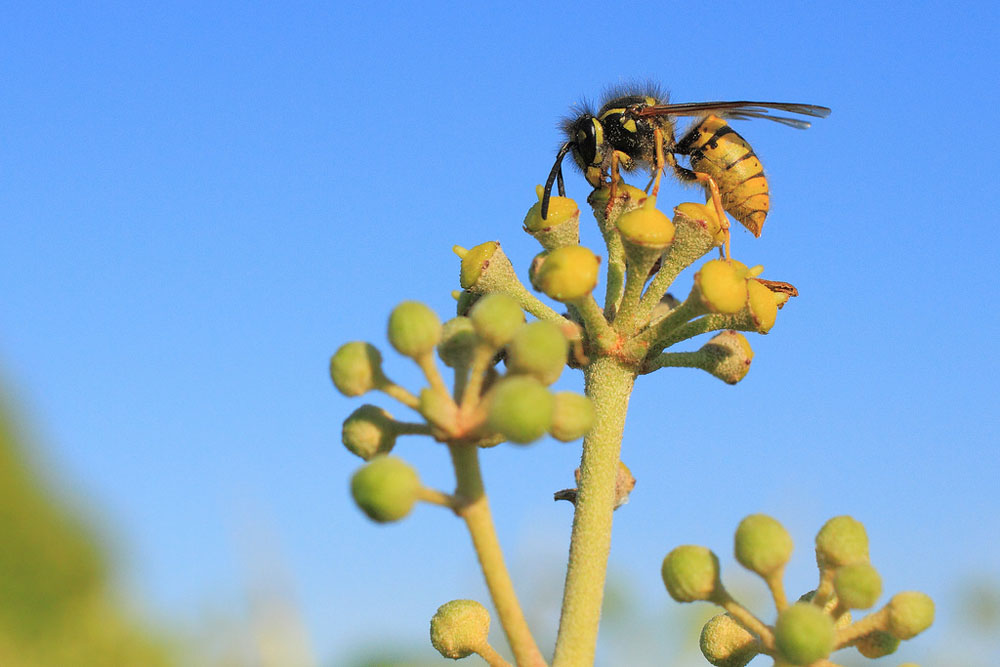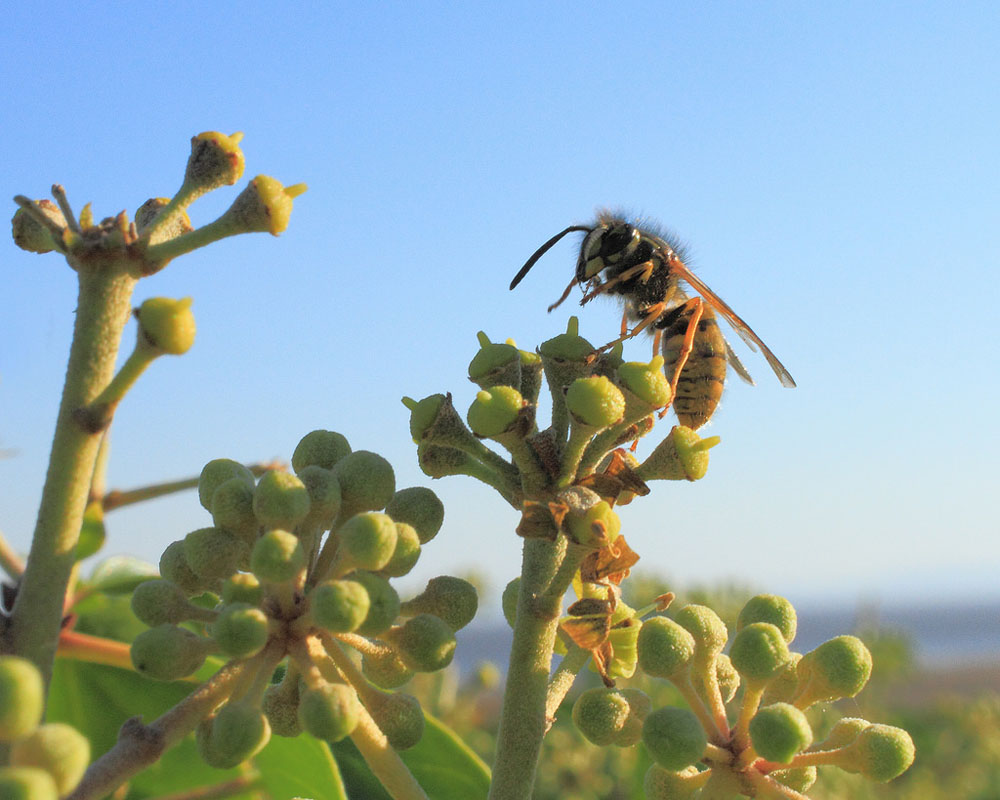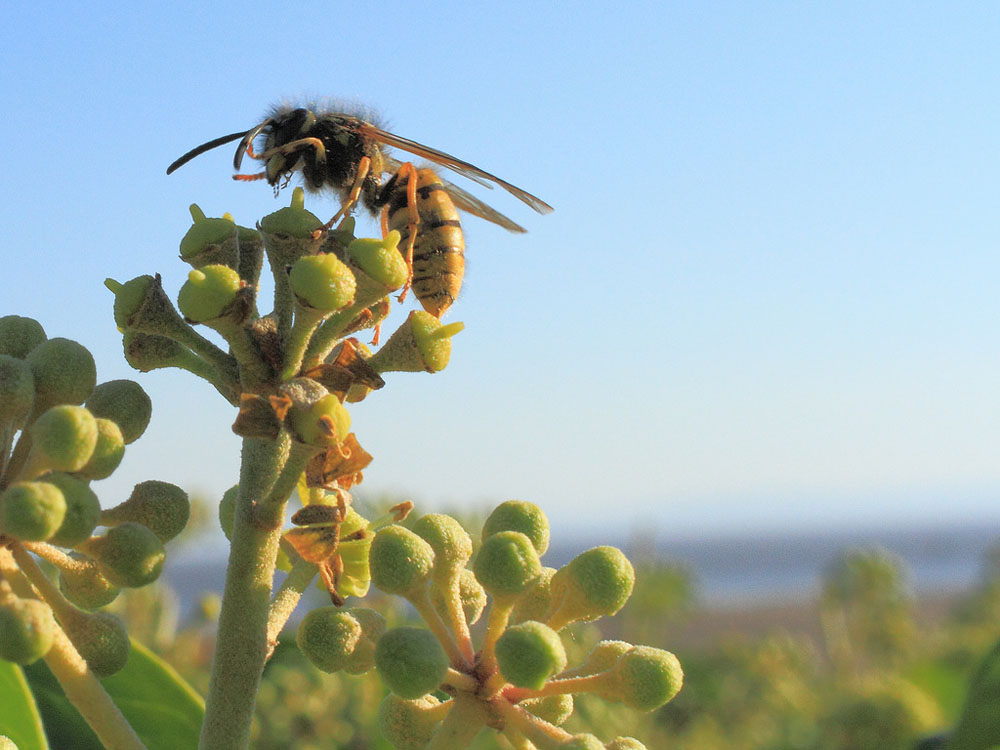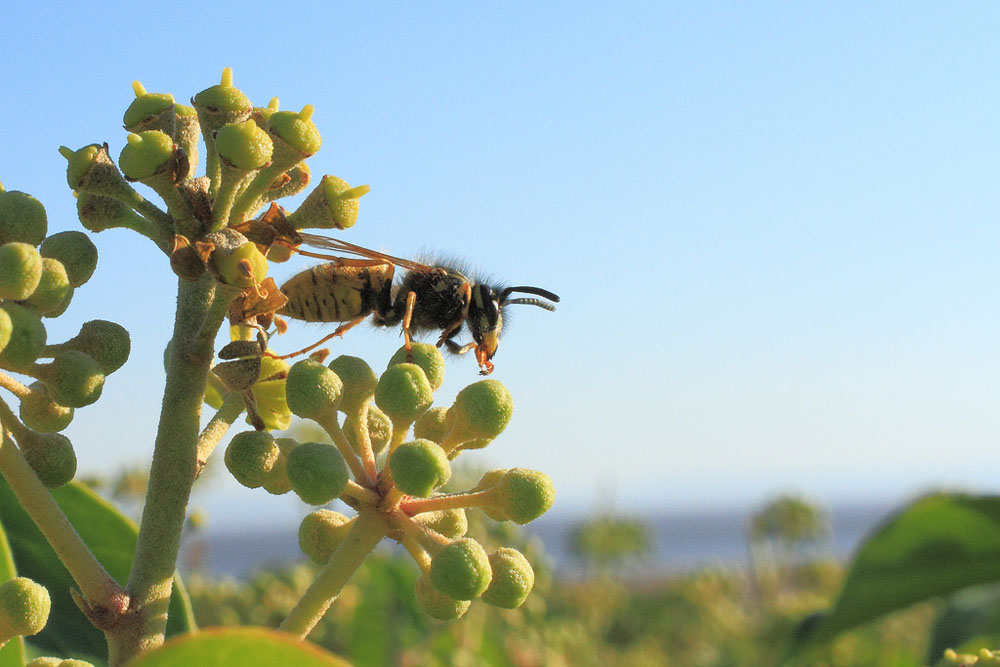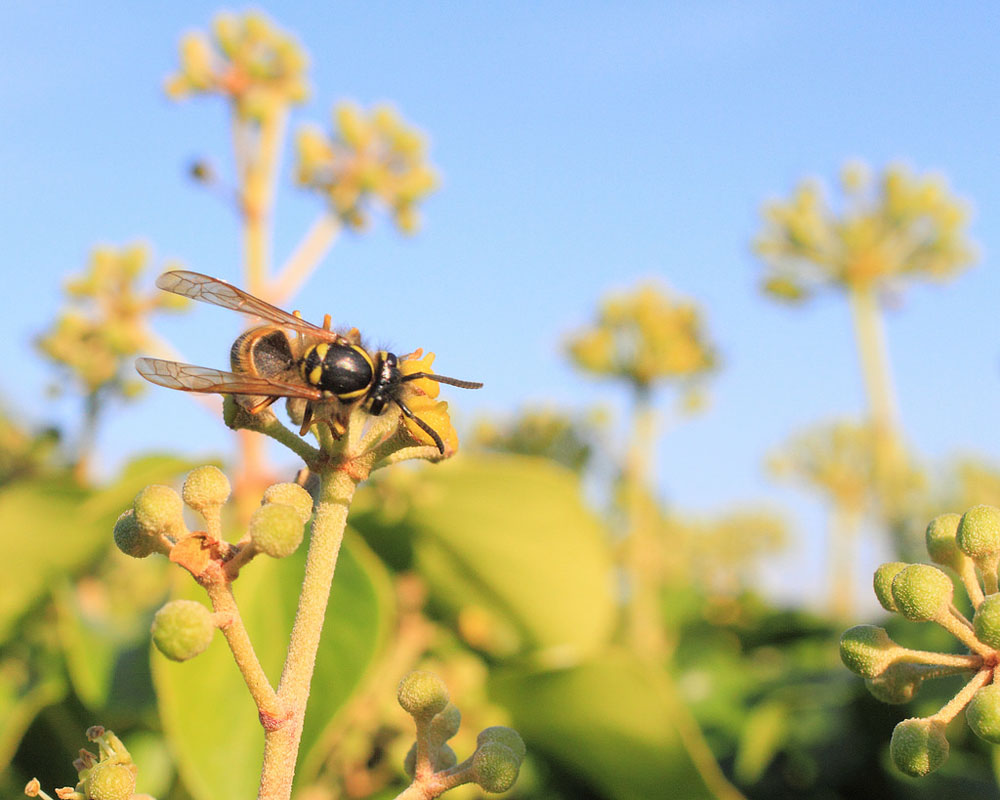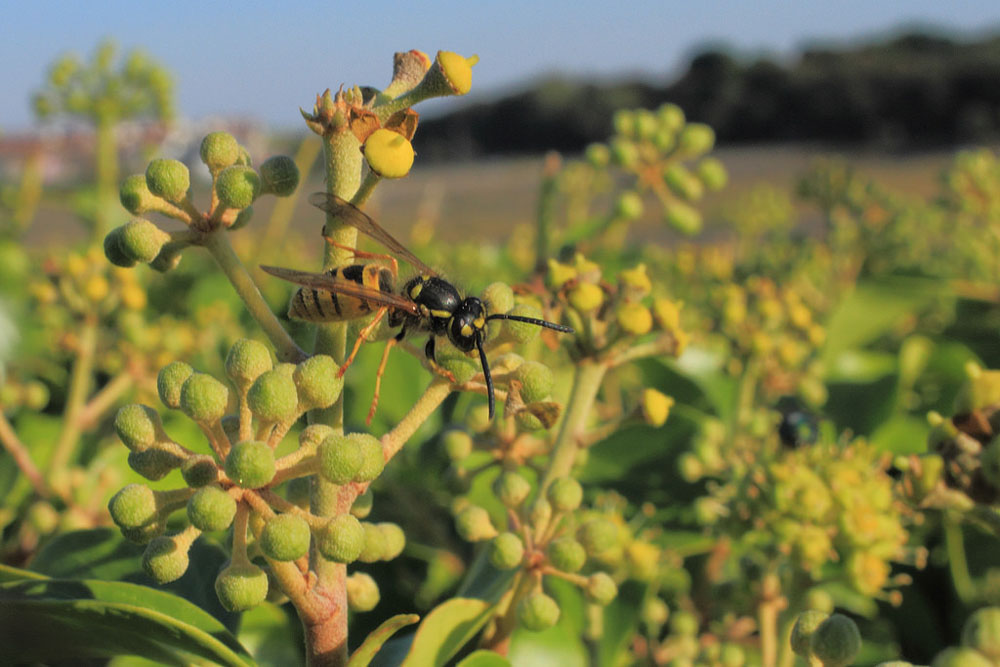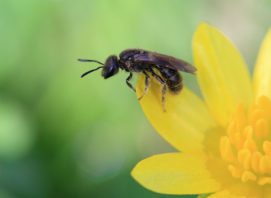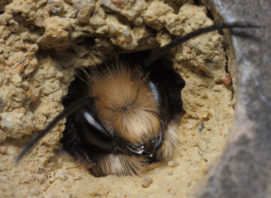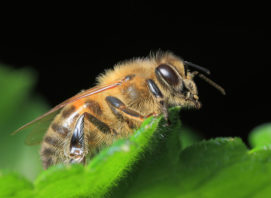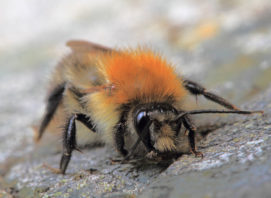Common Wasp
During Autumn, when nectar and pollen sources dwindled, the ivy provided a much welcome source of food for many insects; such as the common wasp, late-season butterflies (Red Admirals) hoverflies, bumble bees and the ivy bee (a bee that specialises in ivy).
They have bright yellow and black bands along the body, with an obvious waist between the thorax and abdomen. They also have two pairs of wings and fairly long, robust antenna. The sting is located at the tip of the abdomen. The queens (reproductive females) are lager than the workers (non-reproductive females).
The Common Wasp can be distinguished from other similar social wasps by the anchor-shaped mark on its face. This species is also found in a wide range of habitats and is common in gardens, woodlands and meadows as well as around habitation. It can be seen between April and October.

